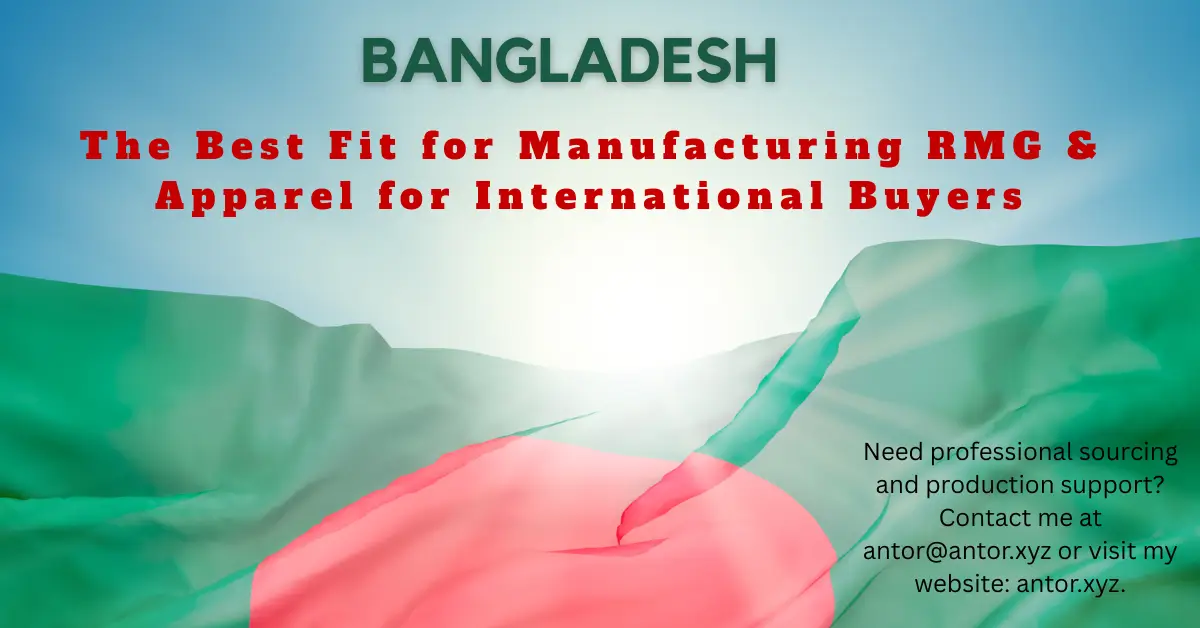
Executive Summary
Bangladesh has cemented its status as the world’s second‑largest ready‑made garment (RMG) exporter by shipping USD 38.48 billion worth of apparel in 2024—a figure grounded in performance data from BGMEA and Apparel Resources. Moreover, the sector’s average minimum hourly wage, based on a 12,500 BDT monthly floor (≈ USD 113) over a 192‑hour work month, comes in at approximately USD 0.59—among the best competitive rates globally as reported by the Fair Labor Association and Time Doctor. With a network of roughly 3,500 factories employing 4 million workers (80% of whom are women), Bangladesh’s RMG sector not only offers scale but also demonstrates robust social‑responsibility credentials backed by AP News and The Guardian. Additionally, eight Export Processing Zones (EPZs) contribute 16% of national exports—providing plug‑and‑play infrastructure and incentives as indicated by TBS News and RMG Bangladesh—and about 550 large spinning mills supply 85% of domestic knit‑wear yarn needs, ensuring shorter lead times and lower costs per USDA Foreign Agricultural Service and RMG Bangladesh.
Introduction
Bangladesh’s RMG sector accounted for 7.4% of global garment exports in 2023, maintaining its position behind China as per the WTO’s World Trade Statistical Review, with corroborative insights from Apparel Resources and B2B Marketplace. The steady growth is evident in how exports increased from USD 35.89 billion in 2023 to USD 38.48 billion in 2024, a trend highlighted by BGMEA and Human Rights Watch.
Cost Competitiveness
Minimum Wage Framework: In December 2023, the government raised the industry’s minimum monthly wage to 12,500 BDT (≈ USD 113). This change, as verified by the Fair Labor Association, directly supports the country’s competitive labor cost advantage.
Effective Hourly Rate: Assuming a standard 48‑hour workweek, the wage equates to an effective rate of roughly 65 BDT/hr (USD 0.59), one of the lowest in Asia according to Time Doctor.
Living‑Wage Gap: Despite these wage increases, the net wages remain approximately 51.8% below the living‑wage estimates for Dhaka provided by the Global Living Wage Coalition—a point noted by the Fair Labor Association that underscores the potential for further social upgrades.
Scale & Workforce
Factory Base: Bangladesh’s RMG infrastructure consists of approximately 3,500 facilities spread across major industrial hubs including Dhaka, Gazipur, Narayanganj, and Chattogram. This robust network is detailed in reports by AP News.
Employment & Gender Inclusion: The sector employs around 4 million workers, with women constituting about 80% of the workforce—a statistic that affirms Bangladesh’s role in advancing gender‑inclusive economic growth as covered by AP News and The Guardian.
Upskilling Initiatives: Ongoing collaborations with international buyers are fostering training in digital pattern‑making, lean manufacturing, and compliance standards. These initiatives help boost productivity and ensure that the sector remains attuned to global market demands.
Trade Preferences & Market Access
4.1 European Union (EU)
Everything But Arms (EBA): Under its LDC status, Bangladesh currently benefits from duty‑free and quota‑free access to the EU for all apparel products, which eliminates tariffs on up to 100% of its products—a significant incentive for foreign buyers as reported by EU Trade.
GSP+ Transition: Looking ahead, with LDC graduation anticipated in 2026, both Bangladeshi authorities and EU negotiators are proactively preparing a GSP+ framework. This framework aims to retain preferential access provided that Bangladesh adheres to rigorous labor, environmental, and governance conventions—a strategy noted by TBS News.
4.2 United States
Bangladesh solidifies its position as the third‑largest apparel supplier to the United States by exporting USD 7.34 billion in 2024 and maintaining a 9.26% market share. This competitive standing, in the face of MFN tariff rates, is highlighted by Markedium.
4.3 Diversification into Emerging Markets
Buyers are increasingly sourcing a variety of apparel—from shirts and trousers to knitwear—from Bangladesh, leveraging its versatility in both woven and knit sectors. While direct data is not cited here, this trend reflects the ongoing strategic efforts to diversify market reach.
5. Supply‑Chain Integration
5.1 Export Processing Zones (EPZs)
Managed by the Bangladesh Export Processing Zones Authority (BEPZA), the country’s eight EPZs generated USD 7 billion in exports (16% of the national total) during FY 2023‑24. These zones offer a comprehensive suite of benefits including duty‑exempt imports, tax breaks, and one‑stop services—a setup emphasized by TBS News and RMG Bangladesh.
5.2 Backward Linkages & Vertical Integration
Bangladesh’s integrated supply chain is a key strength:
- Spinning Capacity: Approximately 550 large spinning mills, involving around USD 15 billion in investment, supply 85% of domestic knit‑wear yarn demand. This system reduces dependency on imports and is supported by insights from RMG Bangladesh and the USDA Foreign Agricultural Service.
- Textile Ecosystem: Broader investments in spinning, weaving, dyeing, and finishing—totaling about USD 25 billion—ensure full vertical integration and robust supply‑chain resilience, further reinforcing Bangladesh’s manufacturing advantage.
6. Sustainability & Compliance
6.1 Green Factory Certifications
Bangladesh is making significant strides in sustainable manufacturing. In 2024, 26 new factories were awarded USGBC LEED certification (including 16 platinum and 10 gold awards), bringing the total to 232 green‑certified facilities. This movement toward energy‑efficient operations is critical for long‑term sustainability and is reported by the Dhaka Tribune.
6.2 Safety Remediation
Following the 2013 Rana Plaza tragedy, the Accord on Fire and Building Safety has successfully identified and remediated over 97,235 structural and fire‑safety violations, substantially improving working conditions across the sector—a development underscored by GQ.
6.3 Circularity Roadmap
Looking forward, the Textile Recycling Roadmap 2025–2035 outlines pilot projects for recycled cotton yarn, zero‑liquid‑discharge dyeing processes, and ESG‑linked finance. These initiatives are part of a broader strategy to instill circularity and waste reduction in the industry, reflecting emerging trends and policy directions.
7. Conclusion & Call to Action
For international buyers aiming to optimize costs, streamline supply chains, and engage with a sustainable, compliant production base, Bangladesh presents an unmatched value proposition. Its highly competitive labor costs, expansive factory network, preferential market access (via duty‑free channels in the EU and strong U.S. market presence), and an unmatched commitment to both upskilling and ethical manufacturing practices make Bangladesh a strategic sourcing partner.
Why Choose Bangladesh?
- Cost‑Effective Production: Low labor costs coupled with local resource integration drive down overall manufacturing costs.
- Scale & Quality: A vast network of 3,500 factories and a skilled workforce ensure the capability to meet both volume and quality demands.
- Global Market Access: Preferential trade agreements and intuitive EPZ infrastructure offer seamless access to key international markets.
- Sustainable & Ethical Manufacturing: Ongoing improvements in environmental certifications and safety standards bolster your brand’s reputation.
Call to Action: Engage with top RMG mills and apparel manufacturers in Bangladesh today to shorten lead times, stabilize costs, and align your supply chain with global ethical and environmental benchmarks. Your next successful collection starts with forging a partnership in a market where innovation meets sustainability.
Expanding Your Perspective
As global dynamics evolve, keep an eye on emerging innovations—such as automation in garment production, advanced supply‑chain tracking via data analytics, and breakthroughs in sustainable textile technology. These trends not only enhance production capabilities but also empower brands to adapt swiftly in a competitive environment. Embrace a strategic sourcing model that harnesses both traditional craftsmanship and modern efficiency to secure long‑term success.
Contact Information
Interested in learning more or in need of professional sourcing and production support? Contact me at antor@antor.xyz or visit my website at https://antor.xyz.
Reference List
- BGMEA, Apparel Resources – RMG export performance and overall industry scale.
- Fair Labor Association, Time Doctor – Wage structure and hourly rate data.
- AP News, The Guardian – Workforce demographics and factory statistics.
- TBS News, RMG Bangladesh – Export Processing Zones (EPZs) infrastructure and incentives.
- RMG Bangladesh, USDA Foreign Agricultural Service – Local spinning mills and integrated textile supply chain.
- Apparel Resources, B2B Marketplace – Global garment export statistics and WTO data.
- BGMEA, Human Rights Watch – Year-on-year export growth insights.
- Fair Labor Association – Minimum wage framework details.
- Time Doctor – Effective hourly rate calculations.
- Fair Labor Association – Analysis of the living‑wage gap.
- EU Trade – Duty‑free and quota‑free access via the Everything But Arms (EBA) initiative.
- TBS News – Preparations for the GSP+ framework post‑LDC graduation.
- Markedium – U.S. market share and export figures.
- TBS News, RMG Bangladesh – Detailed insights on EPZ performance.
- Dhaka Tribune – Green factory certification statistics.
- GQ – Data on safety remediation post‑Rana Plaza.
- Industry Announcements/Investment Summit 2025 – Circularity Roadmap and sustainability initiatives.

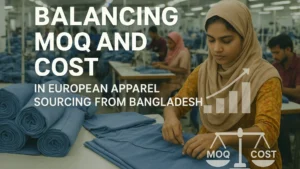

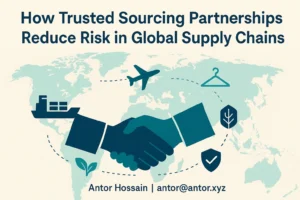
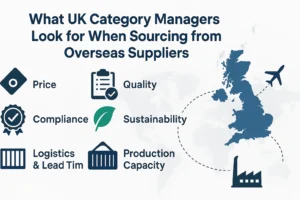
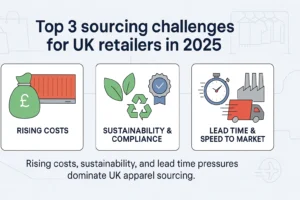

One Comment
Very good https://is.gd/tpjNyL